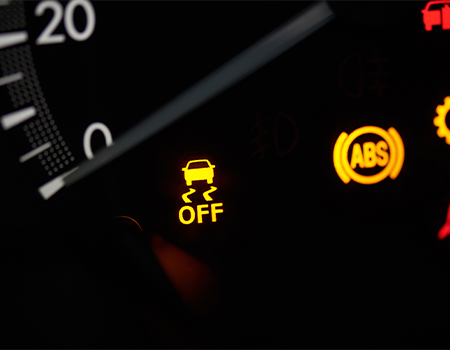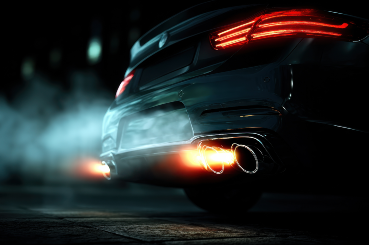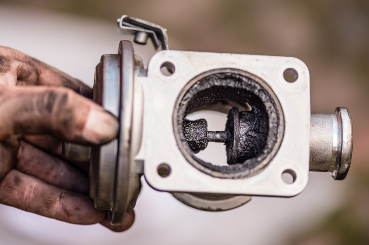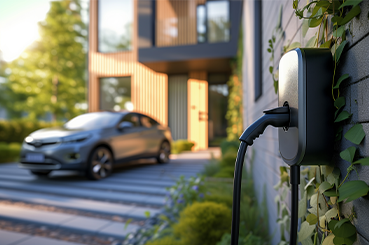Ever get that sinking feeling when your car skids on a wet road? Fear not, fellow drivers! This blog is all about ABS, or Anti-lock Braking Systems. We’ll delve into how ABS works, why it’s a lifesaver (literally!), and explore the latest advancements in this crucial safety technology. Buckle up and get ready to learn how to stay in control, even in slippery situations.

What is an Anti-Lock Brake System?
Many people know their car has ABS but don’t know what it actually does or is for. In essence, it is an electronically controlled system which helps to stop a car’s wheels from locking up by automatically releasing the brakes fractionally.
ABS stands for anti-locking braking system. The system is designed to prevent the car’s wheels from locking up and help maintain grip under hard braking conditions. This system is important because if your wheels do lock up, you are left with virtually no control over the car’s steering and are at a high risk of skidding.
Anti-locking braking systems were first used as anti-skid systems for aircraft. It wasn’t until the 1970s that manufacturers such as Ford and Chrysler proved that it could also be used in cars. It soon started to become mainstream as the safety benefits of such a system became clear.
Since 2004, it has been a standard safety feature of all modern cars sold in Europe.
How Does it Work?
If you’re wondering what does ABS do, well it’s a part of a car’s overall stability control system, which is known as electronic stability control (ESC). The ABS specifically monitors the car wheels and will only react under heavy braking.
Each car wheel has an ABS sensor attached to it which can detect if a wheel is about to lock up and stop moving.
If the sensors detect a wheel locking, it will send a message to the engine control unit (ECU). This triggers the ECU to momentarily release the brake on that wheel. The ECU intermittently releases the brakes on each wheel, hundreds of times a second, until the wheel is no longer at risk of locking up so you can maintain control of your vehicle. When the anti-locking brake system is active, you may feel a pulsation from the brake pedal when you press it.
As you start your car, the ABS light will come on automatically. This is because your car always checks the ABS system on starting; if there’s no problem the light will go off. If the light stays on, it’s a sign that there’s a problem with your car’s ABS system.
When are Anti-Lock Brakes Most Effective?
ABS is most effective when you brake promptly and firmly. This is because ABS has been designed to kick in when the wheel has started to lock up and skid. At this point, the car cannot be steered and the driver has no control over the car.
The quick release of the brake prevents the wheel from locking up to help you keep control of the vehicle. It stops the car from skidding and allows the driver to remain in control of the steering, which means the driver should still manage to avoid the obstacle that they braked for in the first instance.
However, it is also worth remembering that ABS works best on stable surfaces. Icy, snowy or gravel surfaces can reduce the effectiveness of ABS. In fact, some ardent off-roaders will purposefully switch off the ABS as it can reduce the wheel’s ability to grip on to more rugged terrain.
Benefits of ABS
- Decreases the chances of a frontal collision on both wet and dry roads
- Cars less likely to be involved in fatal crashes
- Cars with ABS fitted are less likely to stray from the road
Car manufacturers are now using anti-locking braking systems to help make cornering safer at quicker speeds. Using the same sensors, the car wheels detect when a car is in danger of losing control on a corner and will apply the brakes in the same quick and repetitive way to bring the car back under control.

Limitations of ABS
- Not as effective in icy or snowy conditions or on gravel surfaces
- Can increase stopping distances
There is a common misconception that ABS can help reduce your stopping distance, although, the opposite is true. As the car is effectively applying and releasing the brake.
What to Do If Your Car Doesn’t Have ABS?
If your car doesn’t have ABS or your ABS is not working unexpectedly, you can mimic its function by quickly applying and releasing the brake repeatedly as quickly as you can. This is known as ‘pumping the brakes’. Bear in mind, that this is nowhere near as effective as correctly functioning ABS and that by using your brake pedal, you cannot control a specific wheel.
What if Your ABS is Faulty?
It is perfectly normal for your ABS light to come on when you first switch on the engine, however, if the light stays on, it indicates that there is probably a fault with your ABS. This should not be ignored as it is a vital safety feature of your car.
What Could Cause the ABS Light to Come On?
There are a variety of things that can cause the ABS light to come on and there are some things you can do to identify some of them.
Firstly, you should check your brake fluid reservoir to ensure that the levels aren’t too low, as the ABS warning light can be activated if the levels of brake fluid have dropped.
If this isn’t an issue, it’s a clear sign of a more serious problem that you may not be able to see yourself. It could be that one or more of the wheel sensors, that feed information back to the ECU, has become damaged in some way. This could cause it to report abnormal readings, or not report any at all, causing the ECU to report a fault with the ABS.
The ABS warning light could also have come on due to a loss of pressure in the braking system, which could be caused by cracks or splits in the brake fluid reservoir or brake lines. These are both issues that would likely be identified by tests carried out by trained technicians in a garage.
What to do When Your ABS Light Comes On
If your ABS light comes on individually, you are safe to drive your car to your destination, as your normal brakes will still work. You will, of course, have to be more careful as your ABS will not respond in case of an emergency. You should book your car into your local garage as soon as possible so that they can run diagnostic tests to identify the cause(s) of the anti-lock brakes warning light.
However, if both the ABS light and brake warning light are illuminated together, it signifies a much more serious problem and you should not continue to drive. If this happens, you should bring your car to a steady stop, being very careful with your brakes, reducing your speed gradually. Once you’ve stopped in a safe place and switched your engine off, you should call your breakdown service or local garage and have your vehicle recovered.

How To Fix ABS Light
Before resorting to a mechanic, there are a few simple DIY checks you can try to fix an ABS light yourself.
Firstly, consult your car’s manual to locate the ABS fuse box and check the fuse for any signs of damage. A quick replacement might be all it takes.
Secondly, check your brake fluid reservoir. Low fluid levels can trigger the ABS light, so topping it up with the correct fluid type as specified in your manual could solve the issue.
Finally, if the above steps fail, the culprit might be dirty or faulty ABS wheel sensors. You can try cleaning these sensors with a dry cloth to remove any debris that might be interfering with their operation.
However, it’s advisable to consult a qualified mechanic for a proper diagnosis and potential replacement of the sensor if the light persists. Remember, these DIY fixes are just a starting point, and if you’re not comfortable with any of these steps, it’s always best to edge on the side of caution and take your car to a professional.
If you have other warning lights illuminated on your dashboard and would like to know what they mean, make sure to read Dashboard Warning Lights Explained.




















